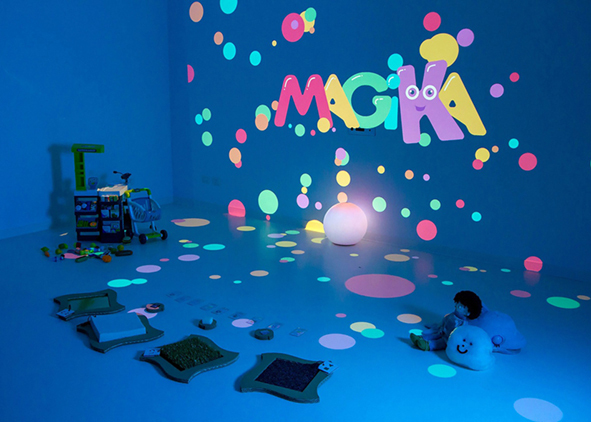Environmental design multisensory experience. Integrated space for simulation activities
DOI:
https://doi.org/10.19229/2464-9309/7212020Keywords:
environment, design, multisensory, experience, multidisciplinarityAbstract
The EDME Laboratory, established within the Polytechnic of Milano, is the first result of a path of multidisciplinary integration, which synthesizes multiscalar relationships, outlining the identity of an instrument of investigation, interpretation and representation of experiential scenarios. The generated model integrates with a physical space innovative ICT technology and materials of the latest generation, to carry out research involving simulations of complex activities and interactions, and predictions on the perceptual and digital control aspects of the environments where such activities are carried out. This contribution, through two research projects, will highlight how qualified research can lead to the creation of methodologies and the implementation of innovative applications; the achievable results meet the needs for systems able to detect and simulate perceptual aspects and for systems of environmental interaction.
Downloads
Article Metrics Graph
References
Baukal, C. E., Ausburn, F. B. and Ausburn, L. J. (2013), “A proposed multimedia cone of abstraction: updating a classic instructional design theory”, in I-manager’s Journal of Educational Technology, vol. 9, n. 4, pp. 15-24. [Online] Available at: files.eric.ed.gov/fulltext/EJ1101723.pdf [Accessed 23 March 2020].
Benford, S., Giannachi, G., Koleva, B. and Rodden, T. (2009), “From interaction to trajectories: designing coherent journeys through user experiences”, in CHI ‘09 – Proceedings of the SIGCHI Conference on Human Factors in Computing Systems, 4-9 April 2009, Boston, Association for Computing Machinery, New York, pp. 709-718. [Online] Available at: doi.org/10.1145/1518701.1518812 [Accessed 26 March 2020].
Benford, S. Greenhalgh, G. Reynard, G., Brown, C. and Koleva, B. (1998), “Understanding and Constructing Shared Spaces with Mixed-Reality Boundaries”, in ACM Transactions on Computer-Human Interaction, vol. 5, issue 3, pp. 185-223. [Online] Available at: doi/10.1145/292834.292836 [Accessed 25 March 2020].
Benyon, D. R. (2012), “Presence in Blended Spaces”, in Interacting with Computers, vol. 24, issue 4, pp. 219-226.
Benyon, D., Mival, O. and Ayan, S. (2012), “Designing blended spaces”, in Proceedings of the 26th BCS Conference on Human Computer Interaction – People & Computers, 12-14 September 2012, Birmingham (UK), pp. 398-403. [Online] Available at: www.scienceopen.com/hosted-document?doi=10.14236/ewic/HCI2012.1 [Accessed 20 March 2020].
Bisson, M., Ianniello, A. and Palmieri, S. (2019), “SimCenter: guidelines to develop a medical simulation center”, in De Giovanni, G. and Scalisi, F. (eds), Pro-Innovation – Process, Production, Product, pp. 239-252. [Online] Available at: www.unipapress.it/it/book/pro-innovation_198/article/24 [Accessed 20 March 2020].
Cruz-Neira, C., Santin, D. J., DeFanti, T. A., Kenyon, R. V. and Hart, J. C. (1992), “The CAVE: audio visual experience automatic virtual environment”, in Communications of the ACM, vol. 35, n. 6, pp. 64-72. [Online] Available at: doi.org/10.1145/129888.129892 [Accessed 24 April 2020].
Dal Palù, D., De Giorgi, C., Lerma, B. and Buiatti, E. (2018), Frontiers of Sound in Design: A guide for the Development of Product Identity Through Sounds, Springer.
Dale, E. (1969), Audiovisual methods in teaching, Dryden Press, New York.
Dorst, K. and Cross, N. (2001), “Creativity in the design process: co-evolution of problem-solution”, in Design Studies, vol. 22, issue 5, pp. 425-437. [Online] Available at: doi.org/10.1016/S0142-694X(01)00009-6 [Accessed 20 March 2020].
Fauconnier, G. and Turner, M. (2002), The Way We Think – Conceptual blending and the mind’s hidden complexity, Basic Books, New York.
Gelsomini, M. et alii (2019), “Magika, a Multisensory Environment for Play, Education and Inclusion”, in CHI EA ‘19 – Extended Abstracts of the 2019 CHI Conference on Human Factors in Computing Systems, 4-9 Maggio 2019, Glasgow (UK), Association for Computing Machinery, New York, pp. 1-6. [Online] Available at: doi.org/10.1145/3290607.3312753 [Accessed 15 March 2020]
Lakoff, G. and Johnson, M. (1999), Philosophy of the Flesh – The Embodied Mind and its Challenge to Western Thought, Basic Books, New York.
Manzini, E. (2015), Design, When Everybody Designs – An Introduction to Design for Social Innovation, MIT Press, Cambridge.
Martin, R. (2009), The Design of Business – Why Design Thinking Is the Next Competitive Advantage, Harvard Business Press, Boston.
Milgram, P. and Kishino, F. (1994), “A Taxonomy of Mixed Reality Visual Displays”, in IEICE Transactions on Information and Systems, vol. E77-D, n. 12, pp. 1321-1329.
Norman, D. A. (2004), Emotional Design – Why We Love (or Hate) Everyday Things, Basic Books, New York.
Reese, H. W. (2011), “The Learning-by-Doing Principles”, in Behavioral Development Bulletin, vol. 17, issue 1, pp. 1-19. [Online] Available at: dx.doi.org/10.1037/h0100597 [Accessed 25 March 2020].
Shams, L. and Seitz, A. R. (2008), “Benefits of Multisensory Learning”, in Trends Cognitive Science, vol. 12, issue 11, pp. 411-417. [Online] Available at: faculty.ucr.edu/~aseitz/pubs/Shams_Seitz08.pdf [Accessed 1st February 2020].

Downloads
Published
How to Cite
Issue
Section
License
This Journal is published under Creative Commons Attribution Licence 4.0 (CC-BY).
License scheme | Legal code
This License allows anyone to:
Share: copy and redistribute the material in any medium or format.
Adapt: remix, transform, and build upon the material for any purpose, even commercially.
Under the following terms
Attribution: Users must give appropriate credit, provide a link to the license, and indicate if changes were made; users may do so in any reasonable manner, but not in any way that suggests the licensor endorses them or their use.
No additional restrictions: Users may not apply legal terms or technological measures that legally restrict others from doing anything the license permits.
Notices
Users do not have to comply with the license for elements of the material in the public domain or where your use is permitted by an applicable exception or limitation.
No warranties are given. The license may not give users all of the permissions necessary for their intended use. For example, other rights such as publicity, privacy, or moral rights may limit how you use the material.


















































































